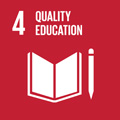- Docente: Stefano Russo
- Credits: 3
- SSD: INF/01
- Language: Italian
- Teaching Mode: Traditional lectures
- Campus: Bologna
- Corso: First cycle degree programme (L) in Environment and Workplace Prevention Techniques (cod. 8487)
Learning outcomes
At the end of the course, students will be able to: - understand the fundamental components of a computing device (control unit, processing unit, peripherals, memory, etc.); - understand the fundamental elements of an operating system (in particular, how Windows is organised); - understand and know how to use the main application programmes, in particular word processing, spreadsheets and database processing; - know how to solve problems using certain available software; - understand the structure of and know how to use the World Wide Web.
Course contents
Digtal and information technologies in the profession of Prevention Technician
- The importance of information and digital technologies for the profession
Basic concepts of information technology
- Meaning and implications of the term “digital”
- Computational thinking
- The concept of algorithms
- The computer: nature, name, functions
- The computer as a general executor of algorithms
- From algorithm to computer programme: principles of programming and programming languages
- Visual block programming
The hardware and logic components of a computer
- Hardware architecture of a computer
- Software architecture
- Life cycle of a programme
- Types of software
- Concept of files and file formats
- The operating system and file management
- IT security and data protection
- The relevance of IT for the technical-healthcare sector
Windows operating system
- Functions of the operating system
- File system, hierarchical organisation
- The Windows file manager
- Utilities
Word processing applied to the professional context
- Document editing
- Inserting tables, headers, notes, images
- Text file formats
- Exporting to PDF or PDF/A
- Printing and archiving
Spreadsheets for data processing and reporting
- Structure and functionality of a spreadsheet
- Cells, formulas, useful functions
- Creating tables, charts and reports
- Filters, sorting, conditional formatting
- Exporting/importing data in a spreadsheet
- Printing and archiving
Databases and structured archive management
- Basic concepts: tables, records, keys
- Designing and creating databases for structured data management
- Importing/exporting data
Network, web and cloud services
- Computer networks
- Client-server model
- Internet: history, founding principles, protocol stacks, applications
The World Wide Web - Web applications
- Browsing the web, using institutional portals,
- Searching for information online
- Use of cloud tools for online collaboration and storage
Readings/Bibliography
The reference bibliography will be provided at the beginning of the course.
The teaching materials prepared by the lecturer, in addition to the recommended texts for the course, are available on the Moodle virtual platform.
Teaching methods
- Theoretical lectures.
- Practical exercises on the PC using examples taken from real industry documentation.
- Given the type of activity and teaching methods used, attendance at this training activity requires all students to first complete modules 1 and 2 of the training course on safety in study areas, [https://elearning-sicurezza.unibo.it/] in e-learning mode.
Assessment methods
- Passing a written exam (final theoretical-practical test) and a possible interview with the teacher on the course topics. The written exam lasts thirty minutes and is graded out of thirty.
- Possible practical tests at the end of the modules.
- Continuous assessment based on participation and performance in exercises.
Students with SLDs or temporary or permanent disabilities: it is recommended that you contact the relevant University office (https://site.unibo.it/studenti-con-disabilita-e-dsa/it) in good time: it will be their responsibility to propose any adjustments to the students concerned, which must in any case be submitted 15 days in advance for approval by the teacher, who will assess their appropriateness in relation to the educational objectives of the course.
Teaching tools
Lecturer's slides and presentations.
Exercise books or case study collections.
Software and IT tools.
Online collaboration tools.
Online resources and databases.
Online quizzes.
Podcasts.
Office hours
See the website of Stefano Russo
SDGs

This teaching activity contributes to the achievement of the Sustainable Development Goals of the UN 2030 Agenda.
